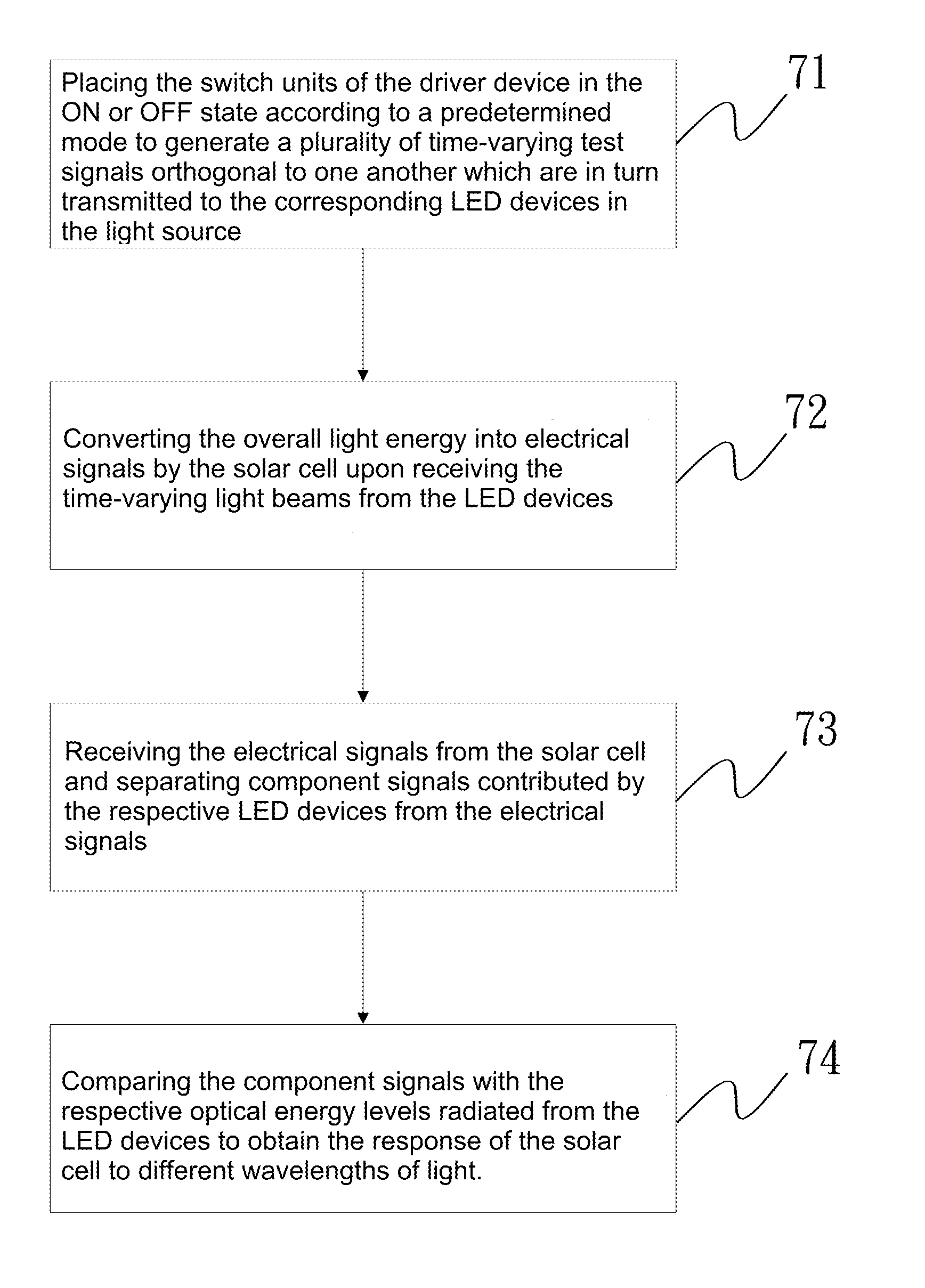Process and apparatus for measuring spectral response of solar cell, and process for compensating decay of light source
a solar cell and spectral response technology, applied in the field of apparatus and process for evaluating solar cells, can solve the problems of unreliable sun nor artificial light source, an increasingly serious issue, and the inability to measure the spectral response of solar cells, and achieve the effect of compensating the decay of light sources
- Summary
- Abstract
- Description
- Claims
- Application Information
AI Technical Summary
Benefits of technology
Problems solved by technology
Method used
Image
Examples
Embodiment Construction
[0042]An apparatus for measuring the spectral response of a solar cell according to the invention is shown in FIG. 4, which comprises an LED light source. As show in FIG. 5, the LED light source used herein for measuring the respective responses of a solar cell 9 to red, green and blue light includes an LED array 22 composed of 10 sets of LED devices 220, 221, . . . 229, each set being provided with a red-light LED device, a green-light LED device and a blue-light LED device designated as 220R, 220G, 220B, . . . 229B, respectively. Each of the LED devices is coupled to a driver circuit 213 as shown in FIG. 6. The driver circuit 213 includes a switch unit 211 for operatively connecting the LED device to a current source 210 by being placed in the ON state, thereby permitting the LED device to emit light.
[0043]Under illumination from a light source, the spectral response of a solar cell can be obtained by assigning test signal data to the respective LED devices. The test signal data a...
PUM
 Login to View More
Login to View More Abstract
Description
Claims
Application Information
 Login to View More
Login to View More - R&D
- Intellectual Property
- Life Sciences
- Materials
- Tech Scout
- Unparalleled Data Quality
- Higher Quality Content
- 60% Fewer Hallucinations
Browse by: Latest US Patents, China's latest patents, Technical Efficacy Thesaurus, Application Domain, Technology Topic, Popular Technical Reports.
© 2025 PatSnap. All rights reserved.Legal|Privacy policy|Modern Slavery Act Transparency Statement|Sitemap|About US| Contact US: help@patsnap.com



